The architects and designers who arrived in Australia as fascism took hold in Germany and central Europe went on to play a significant role in their fields and the cultural and aesthetic life of their new country. Many brought with them the principles and ethos of Bauhaus – simplicity and functionality, with material selection revitalising design. These principles aimed to unite art and architecture for social and political purpose – motivations that led to the closure of the Bauhaus School in Berlin in 1933.
Their contributions were visible at many levels: on the street, through the design of modernist apartment blocks, cafes, churches, commercial spaces and domestic dwellings, as well as public fountains, murals and screens; in the home, via furniture, textiles and hollowware; and on the body through tailoring, fabric design and hand-made jewellery. However, their profoundest impact was arguably less visible, for it was at the grassroots level of education. 1
The migrants and displaced persons who arrived after World War II also contributed to the built environment through construction and adaptations of existing dwellings. The ‘populate or perish’ catch cry led to people, chiefly from Southern Europe, arriving to bolster Australia’s workforce, leaving behind them challenging circumstances after five years of war in Europe. Immigration contributed one-third of Australia’s population growth in the 1946-1960 period.
Émigré architects worked for government departments as draftspeople, designing for their migrant communities and ultimately many established their own practices. Others joined educational institutions and there contributed to the expansion of modernist design ideas. 2
The following selection of photographs in our collection documents some of their work.
During World War II, responding to fears of ‘enemy aliens’, over 2,500 internees arrived on the Dunera in September 1940 from England and were sent to internment camps at Hay, Orange and Tatura. In 1941 most internees were repatriated back to England and approximately 785 remained in Australia.3
This group went on to make a significant contribution to Australian cultural life. The illustrations below are by Fred Lowen – together with partner Ernest Rodek they created the furniture company Fler, their pieces gracing many a sixties sitting room.
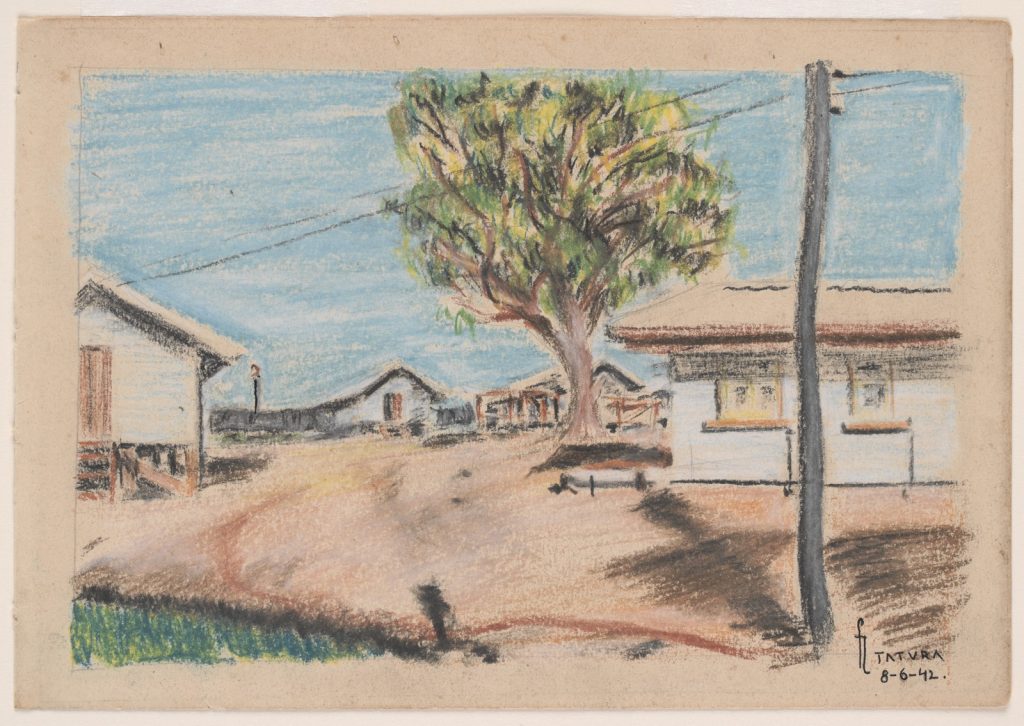

These works are in copyright.
Shulim and Elsbeth Krimper left Germany in 1938 after successfully applying for a permit to emigrate to Australia. They arrived in Melbourne in August 1939. Initially struggling to find work and coping with wartime constraints on furniture design and manufacture, Krimper worked towards an exhibition formed around his own ideas after meeting Robert Haines, assistant director at the NGV. Held at Georges Gallery, in 1951 this was a turning point. Combined with the stylistic influences of Biedermeier and the German Craft Workshops was Krimper’s passion for the medium of timber: ‘he had a sculptor’s attitude towards wood, sensing its forms and beauties within the timber and seeing his role as the liberation of its finest qualities.’ 4
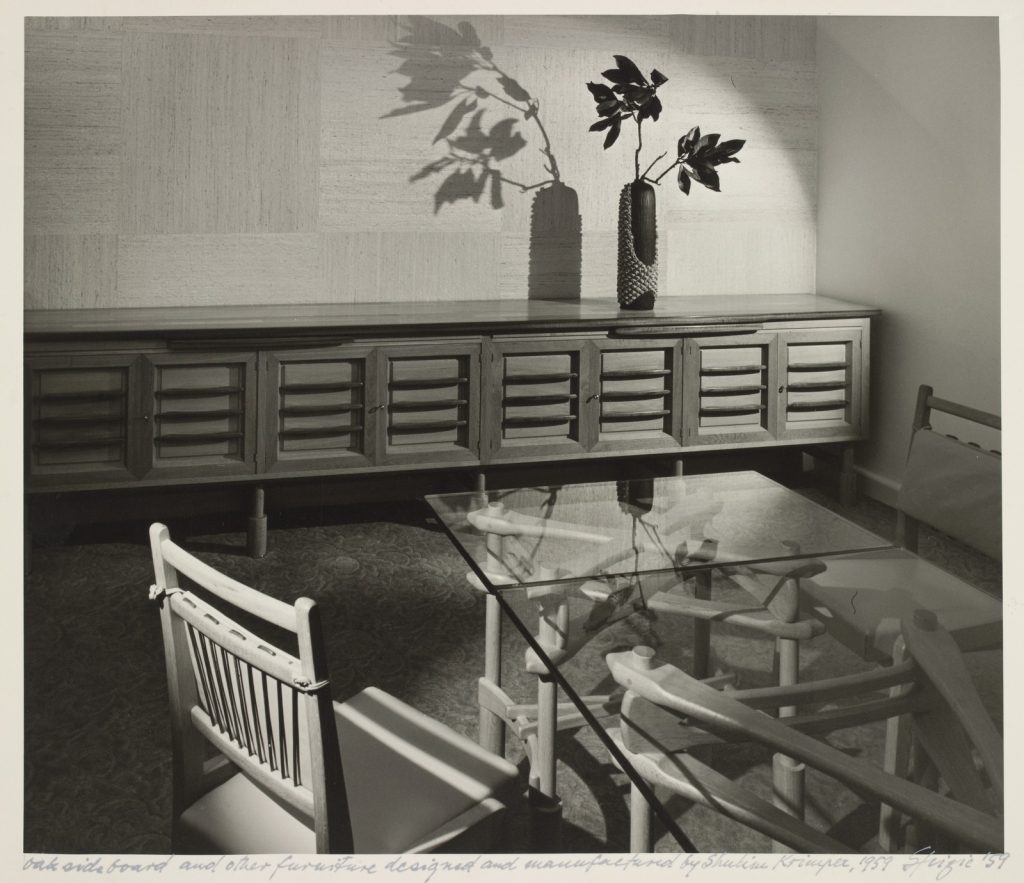
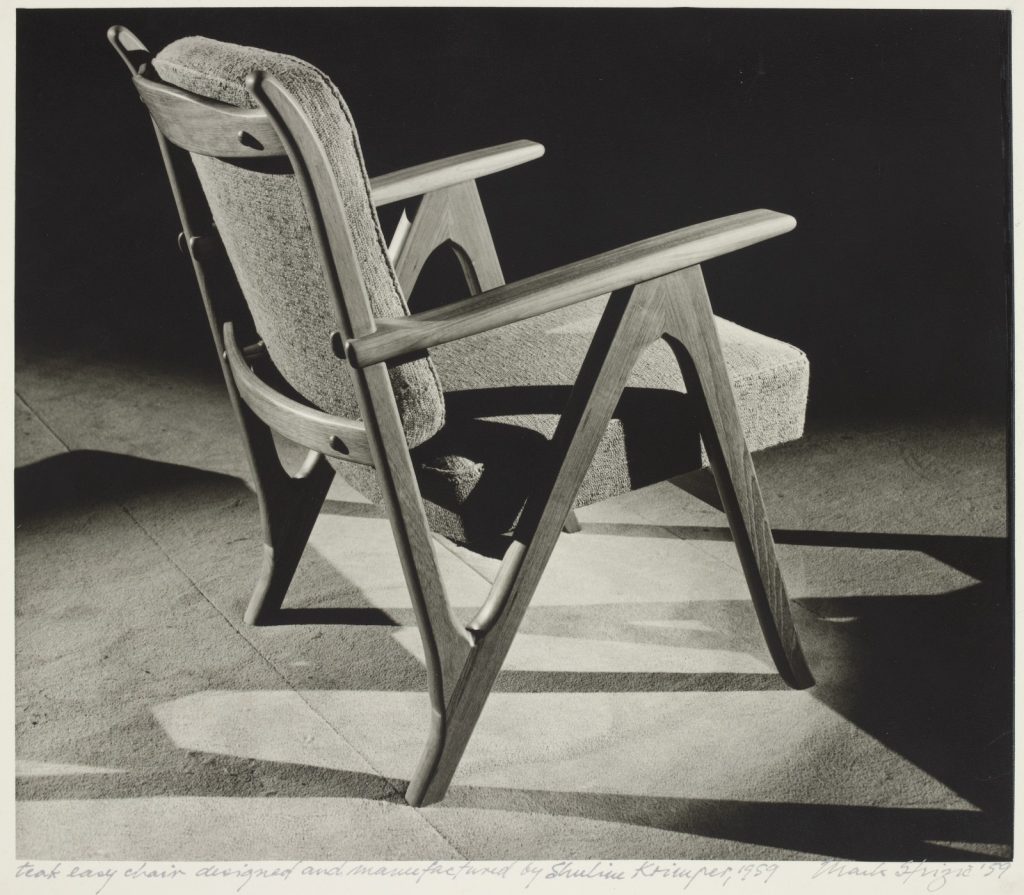
These works are in copyright.
Ernest and Noemi Fooks arrived in Australia in May 1939 from Europe, via Canada. Qualified as an architect and planner, Ernest Fooks worked for the Housing Commission of Victoria, lectured in planning at RMIT and established his own architectural practice in 1948. He designed residential and commercial projects, and both were active in the Jewish community in Melbourne.
The Fooks house, built in 1966 is on the Victorian Heritage Register – for its ‘architectural and aesthetic significance as an intact, individual, and highly creative work combining analytical planning, aspects of Scandinavian and European modern design while incorporating principles of traditional Japanese architecture. It represents the most architecturally resolved of Fooks’ domestic designs, being a complex and carefully detailed multi-layered spatial composition in a fully designed landscape.’

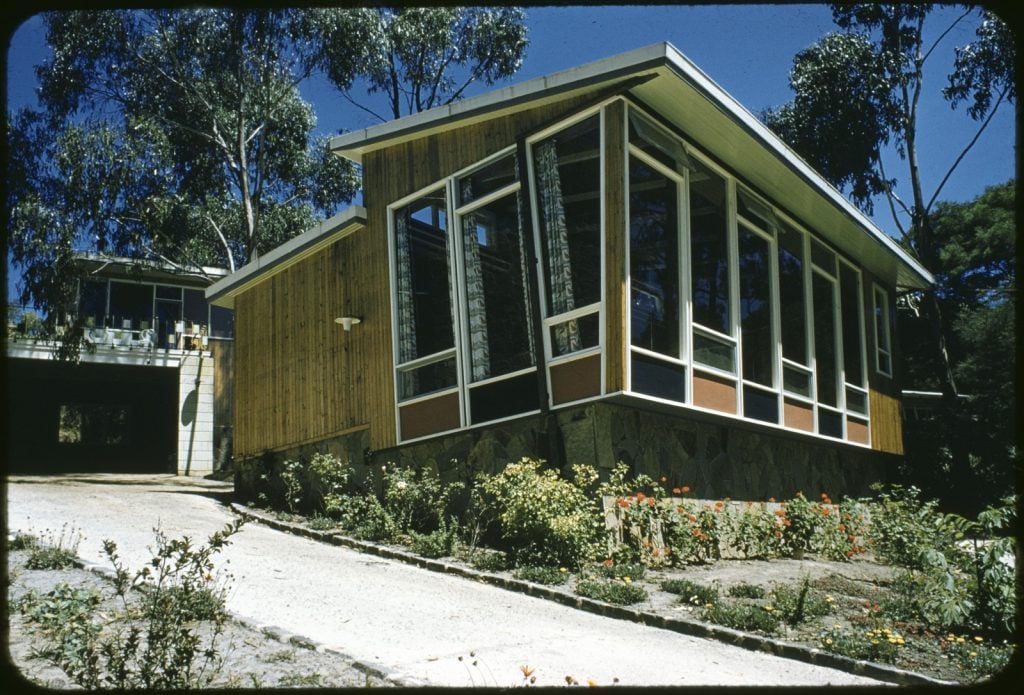
Photographs by Wolfgang Sievers.
These works are in copyright.
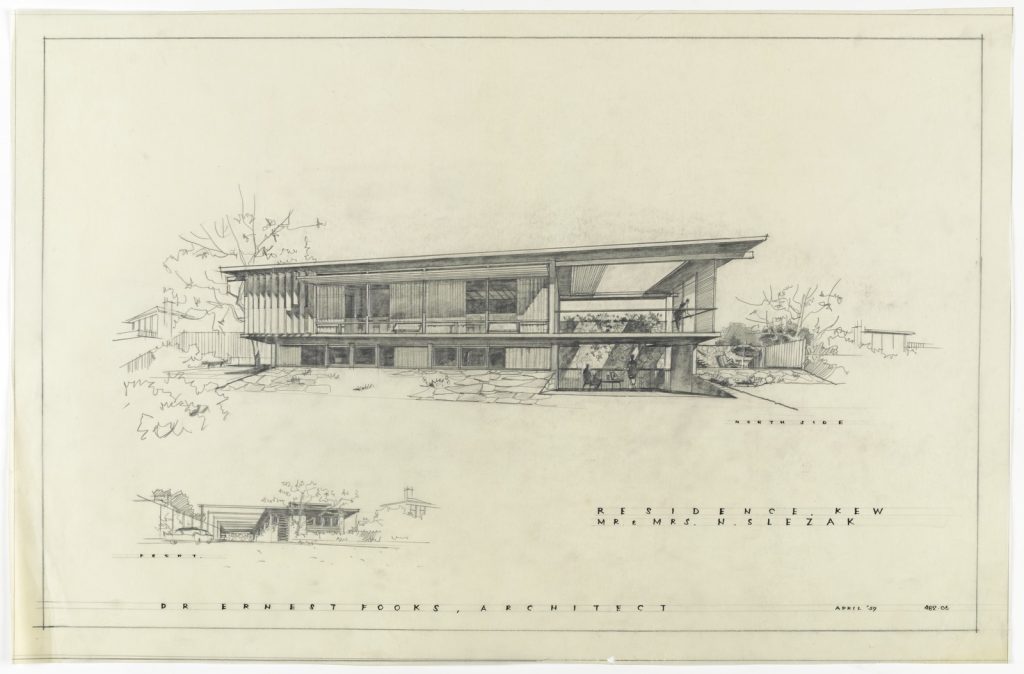

Anatol Kagan, born in Russia, moved with his family to Berlin after his father’s exile in 1922. Again, faced with a hostile government, the family left in 1939 and Kagan eventually settled in Melbourne. The rest of his family went to the US. As building work was interrupted by WWII, he joined the Department of Works and Housing, recommencing his architectural practice after the war.
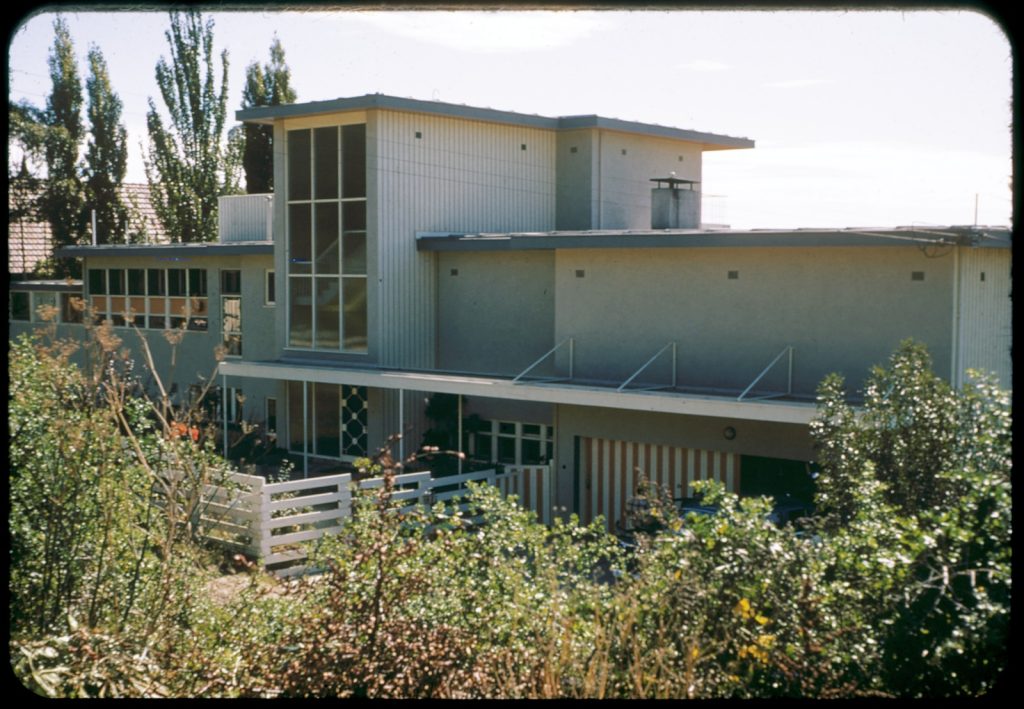

House – near the Belvedere – Kew. Melbourne, 1954-55, H91.244/3352.
Photographs by Peter Wille. These works are in copyright.
Frederick Romberg began his studies in Munich as a law student, fleeing to Switzerland to study architecture, and arrived in Australia in 1938 on a travelling scholarship, commencing work as a draftsperson for Stephenson and Turner.
Romberg has been credited with establishing ‘the first genuine European modernism in Australia reviving the international style here at a time when it was beginning to flag under a welter of streamlining. Though [he] drew on European sources his architecture developed a unique and powerful style.’5. He formed a partnership with Roy Grounds and Robin Boyd and the firm was responsible for many of the now-iconic Melbourne buildings of this period.
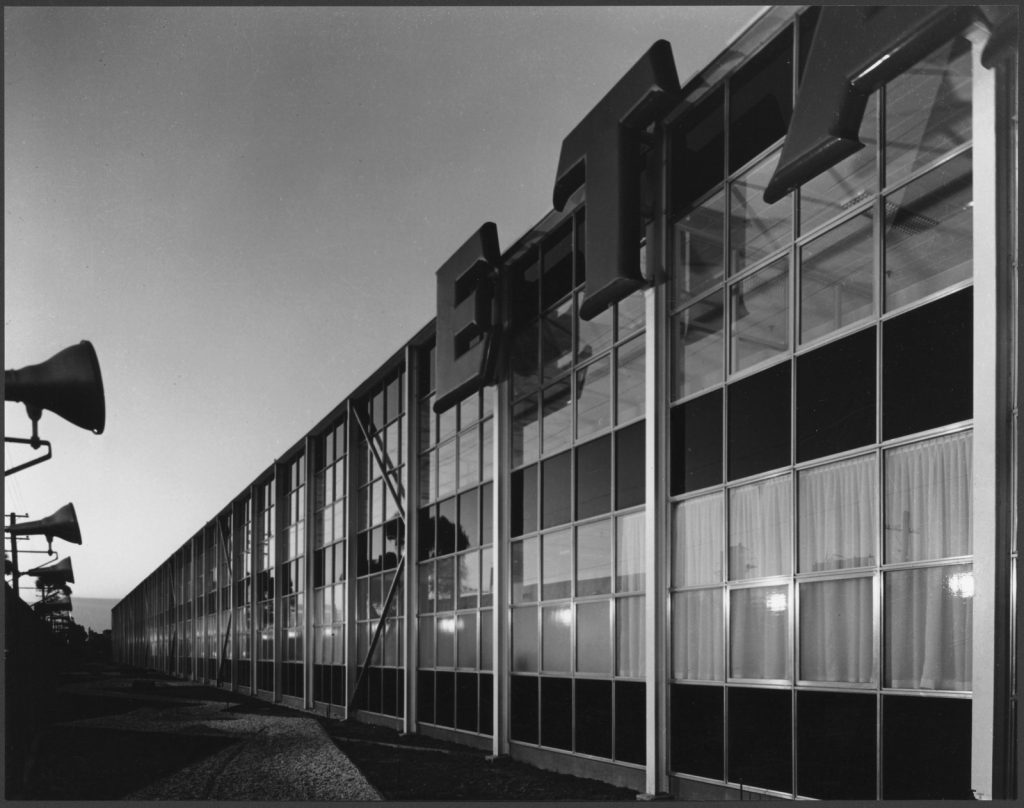
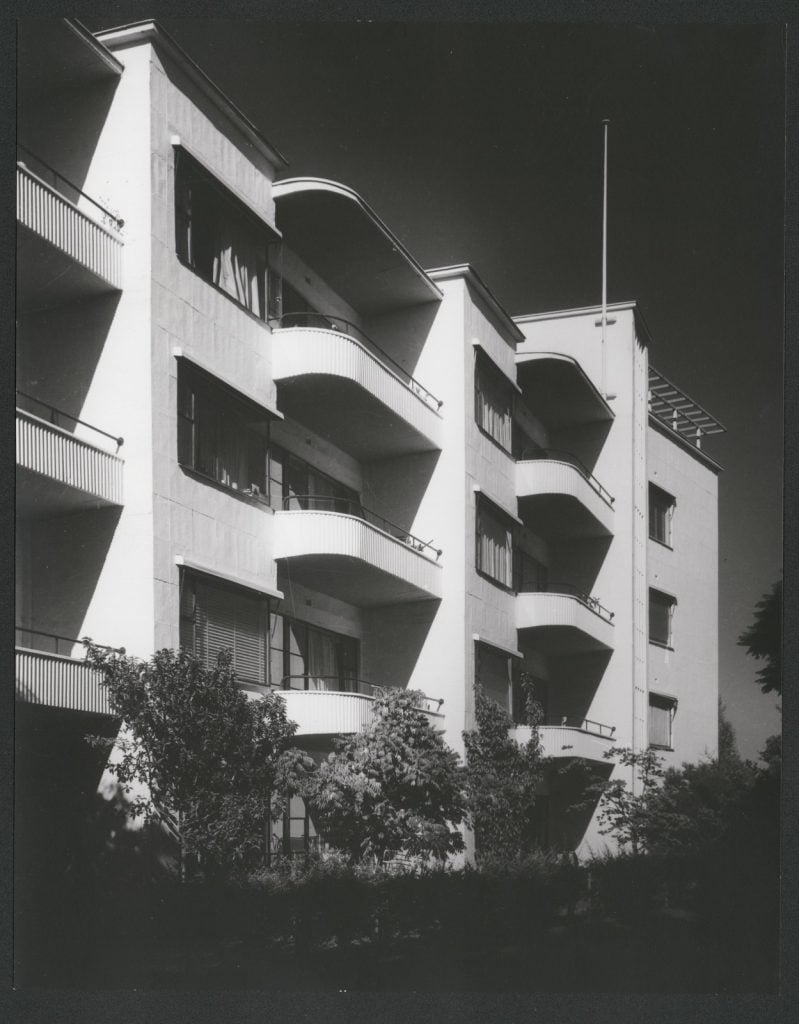
Romberg, Frederick and Shaw, Mollie,. architects, Newburn flats, 30 Queens Road, Melbourne, H2000.195/386.
Photographs by Wolfgang Sievers.
Gerd and Renate Block studied in Germany and migrated to Australia in 1950. They designed residential projects as well as municipal offices and corporate buildings. Gerd lectured in architecture at the University of Melbourne and later the family moved to Wellington, New Zealand for Gerd to take up the foundation chair of Architecture at Wellington University, and for Renate to continue her own practice. They built their own house in Montmorency while living onsite in a caravan – later providing the plans through the Small Homes Service. Gerd’s comments on residential density were ahead of their time:
According to Gerd, the sunshine and space of Australia offer the architect ‘considerable scope.’ ‘We can use much stronger colours in Australia than in Europe,’ he says. ‘Architects can make Australian homes more extrovert than those of colder climates, with more and bigger windows, sun rooms, carports instead of garages, and a closer relationship between the house and the garden.’ Although they have designed big houses, Gerd and Renate believe there is a need for more terraced housing or ‘condensed’ living in Australia. ‘Unless people are prepared to live closer to their neighbour, they will have to resign themselves to traveling up to an hour or more between their work and home,’ says Gerd.
‘The Blocks are on their way up‘, Good Neighbour, Canberra, 1 April 1962, p. 6.


Residential stairwell in Kew, 1959, H2008.142/94.
Photographs by Mark Strizic. These works are in copyright.
In 1955 they won a competition to design the German embassy in Canberra, and in 1962 designed this Mosque (below right) for the legations of Indonesia, Malaysia and Pakistan.
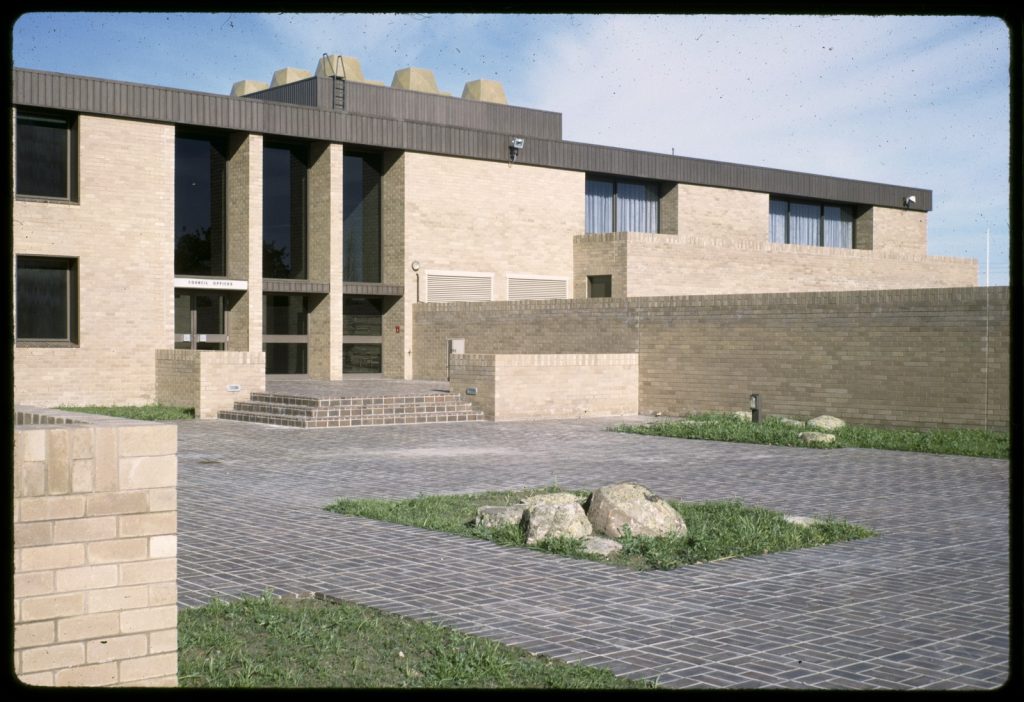
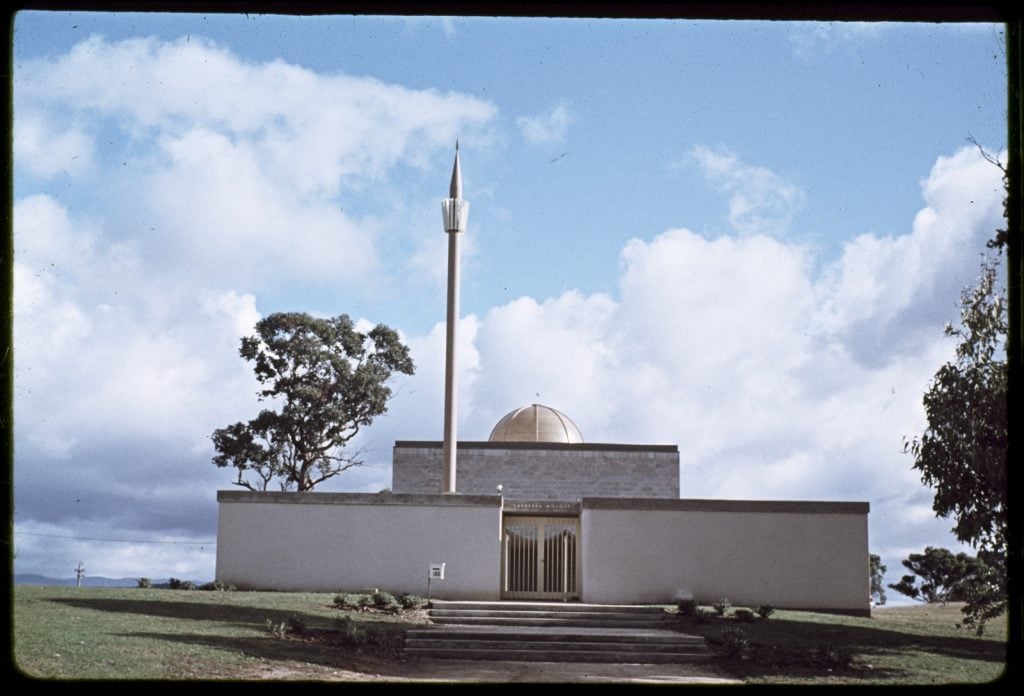
Mosque. Cnr Empire Circuit and Hunter St. Yarralumla, 1960/61, H91.244/524.
Photographs by Peter Wille. These works are in copyright.
Alex Jelenik, born in Czechoslovakia in 1925, worked with his master builder father before studying at the Special School of Architecture at the Prague Academy of Fine Arts. In 1948, just prior to graduating, he fled the communist regime, arriving in Australia in 1950. He worked as a builder’s labourer, on the Snowy Mountains Scheme and as an architectural draftsman. Only one of his two completed buildings remains – the Benjamin House, in Canberra, now heritage listed. An extension designed and built for partner Lina Bryans in Erin Street, Richmond also survives. 6
Jelenik’s story differs from those who continued to make their name and succeed in their new country.
He was not one of those émigrés who realised his remarkable potential, like the somewhat older Europeans Frederick Romberg, Karl Langer or Harry Seidler. Apart from its brief flowering in the Deakin and Peregian buildings, Jelinek’s career was thwarted by his perfectionism, his poor negotiation skills, and what would have seemed his eccentricity in the Australian context.
Benjamin, Roger (2012) ‘Prague on the Sunshine Coast’, Fabrications, Kensington, NSW, Society of Architectural Historians, Australia and New Zealand 21:2,
61-82, DOI: 10.1080/10331867.2012.10739945
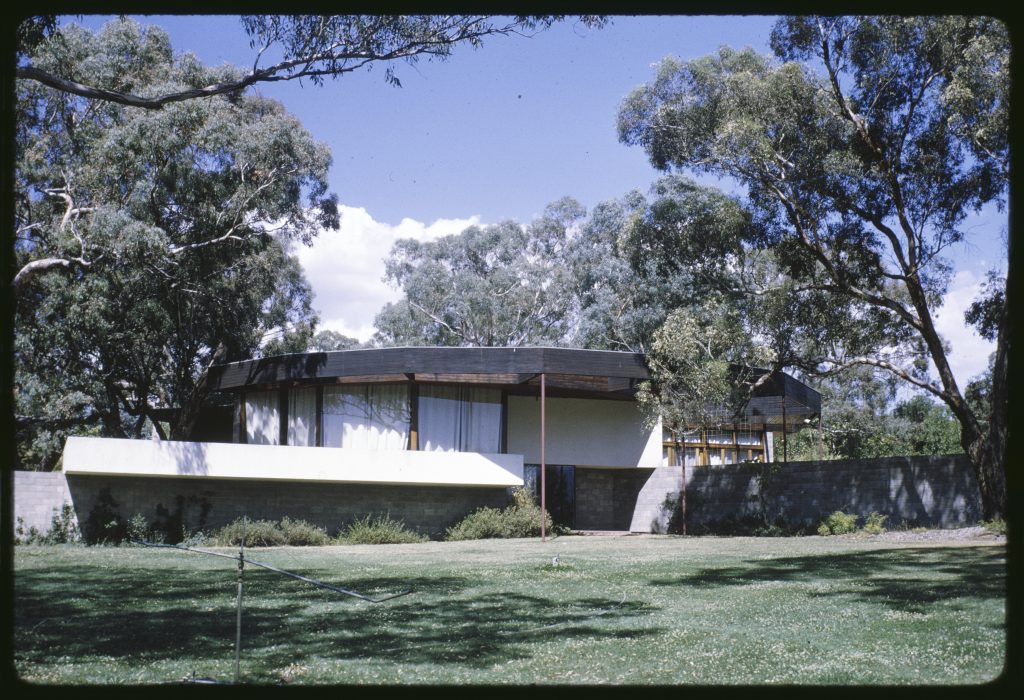
Photograph by Peter Wille, H91.244/3267. This work is in copyright.
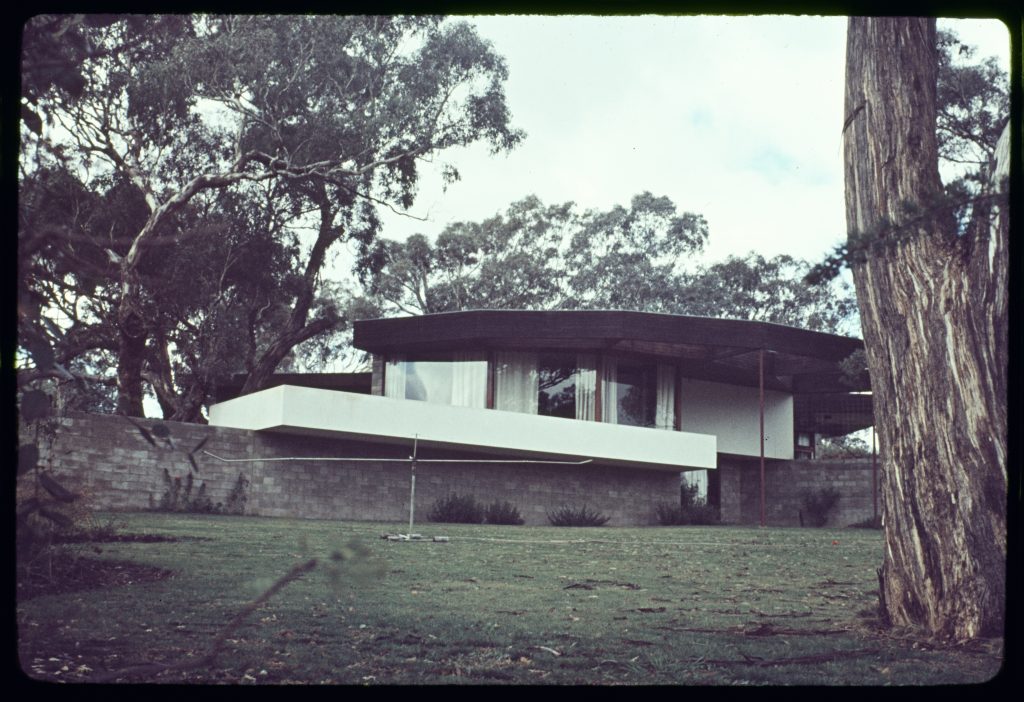
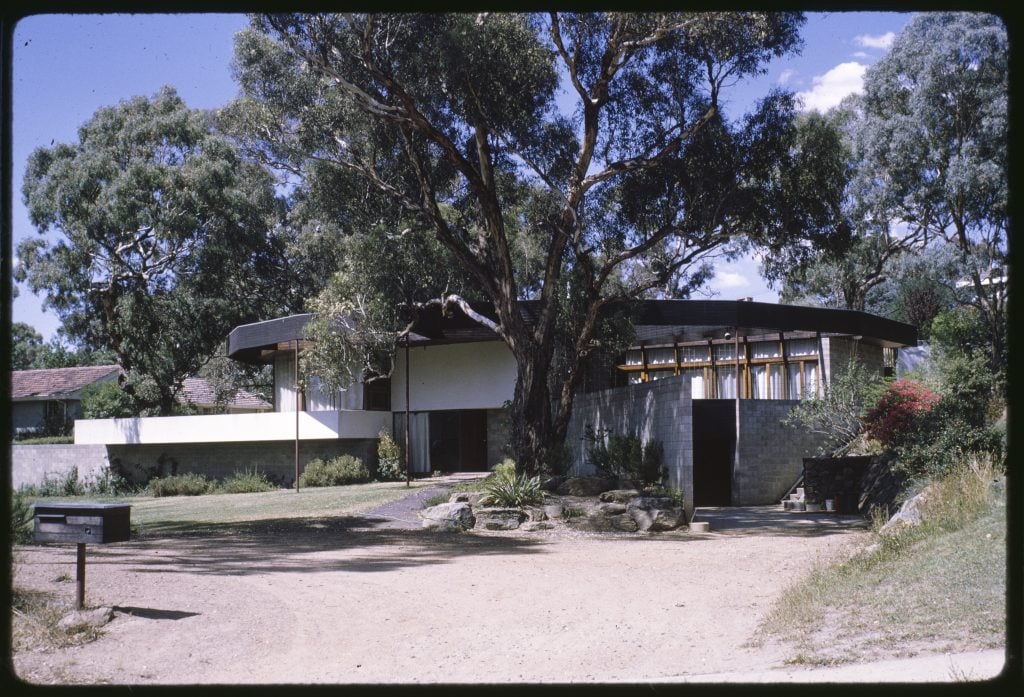
Photograph by Peter Wille, H91.244/3269 (left), H91.244/3268. These works are in copyright.
The dwellings illustrated below form part of the Northcote Enclave, the focus of a 2009 study of brick veneer houses, built from 1965 to 1969. This, combined with earlier studies,7 identified and documented the “tell-tale” details of migrant housing architecture.
A home was a strong signifier of success, and a place for migrants to reflect and celebrate both their homeland and their new country. Communities came together and using their skills in carpentry, plumbing, painting, concreting and joinery, built houses and social connections. Summer kitchens, terraces and spaces for food production and storage allowed traditions to continue. The materials and functions included in many of these homes – such as concrete and terrazzo, balustrades, tiling and terraces, outdoor kitchens and work spaces are now widely embraced.
‘Housing is pivotal to any migration story, with studies showing that migrant participation in the adaptation or building of houses provides symbolic materiality of belonging and the platform for agency and productivity in the broader context of the immigrant city’ 8

This image is in copyright.

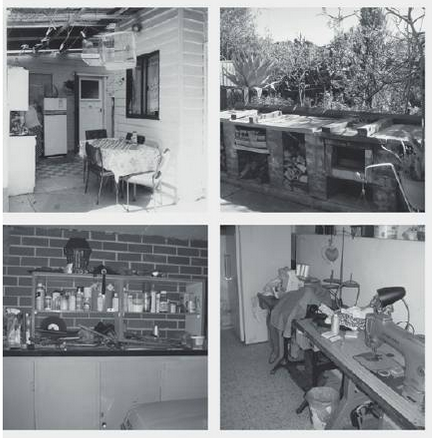
Images from Migrant housing: architecture, dwelling, migration are reproduced with kind permission of the author.
Further reading
Dictionary of unsung architects
Eckett, Jane and Edquist, Harriet, 2019, Melbourne modern; European art and design at RMIT since 1945, RMIT Gallery, Melbourne
Goad, Philip, Stephens, Ann, (eds.), 2019, Bauhaus diaspora and beyond : transforming education through art, design and architecture, Miegunyah Press, Carlton, Power Publications, Sydney
Hirschfeld-Mack, L.,1957, The Bauhaus – its beginnings. Quadrant, 1(2), p 81–86. Available from home with State Library membership.
Howcraft, Rebecca, (ed), 2017, The other moderns : Sydney’s forgotten European design legacy, NewSouth Publishing, Sydney
Inglis, Ken, Spark, Seumas, Winter, Jay, Bunyan, Carol, 2018, Dunera lives : Volume 1 : a visual history,
Monash University Publishing, Clayton.
Inglis, Ken, Spark, Seumas, Winter, Jay, Bunyan, Carol, 2020, Dunera lives. Volume 2, Profiles,
Monash University Publishing, Clayton.
Lovanovska, Mirjana, 2019, Migrant housing : architecture, dwelling, migration, Routledge, Abingdon, Oxon ; New York, NY. Available from home with State Library membership.
Peter Wille: Out driving – SLV exhibition of photographs by Peter Wille, capturing Melbourne houses of the 1950’s and 1960’s.
RMIT Design Archives
Vienna abroad RMIT Design Archives Journal, Vol.9, No.1 2019
Architecture at SLV
References
- Eckett, Jane and Edquist, Harriet, 2019, Melbourne modern; European art and design at RMIT since 1945, RMIT Gallery, Melbourne, p. 6
- ibid., p. 358 and 360.
- The Dunera experience : an exhibition at the Jewish Museum of Australia, 1990, South Yarra, The Museum, p. 23.
- Lane, Terence, and Strizic, Mark, 1987, Schulim Krimper cabinet maker: a tribute, South Yarra, Gryphon Books, p. 20
- Hamann, Conrad, Grounds, Romberg and Boyd in Art and architecture of the twentieth century: Australia and the west, Geelong, Deakin University, 1993, p.153
- Benjamin, Roger, (2020) ‘A Studio for Lina Bryans: Alex Jelinek at Erin Street Richmond‘, RMIT design archives journal, Melbourne, Vic, RMIT Design Archives, 10:1, 50-61
- Lozanovska, Mirjana, 2019, Migrant Housing : Architecture, Dwelling, Migration, Abingdon, Oxon ; New York, NY : Routledge, Note 20, p.10
- ibid., p. 69


Thank you for a wonderfully researched and illustrated essay on an important era in the philosophy and art of design. From first-hand experience, Shulim Krimper’s chairs are not only stylish but very comfortable!
Hello Evelyn – many thanks for your comments – how wonderful to have some of Schulim Krimper’s furniture! The contribution of Krimper and many others was so important – not solely for its aesthetic. We are fortunate to have these records in our collection.
Thank you for this excellent piece Jane. It’s important that we remember how culturally crucial that post-war migration was to this country. I spoke to Fred Lowen a few years before he died (we have a family connection) – it was exciting hearing about the struggles of those early years. We’re proud owners of two of his later Tessa armchairs, the company he started with his brother.
Well done.
Hello Dennis – many thanks for your comments. The Library is fortunate to have a collection of Fred Lowen’s works. Lovely that you have some of his furniture, with such a story behind it too.
Congratulations on bringing together such an informative and insightful summary of the ideas and achievements of these significant contributors to Australian design history. It is hard to believe that these very stressful conditions were being experience in the very early years of my life! We have been very lucky to have been able to have these people in Australia.
Hello Grace – thank you very much for your comments. Yes, discovering these histories does add another dimension to memories of that time in Australia. We have indeed been very lucky.